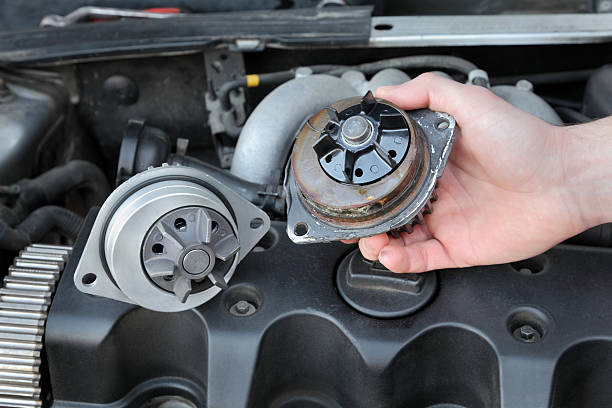
Choosing the right motor oil for your vehicle is crucial to ensure the smooth operation and longevity of your engine. In this comprehensive guide, we’ll explore the differences between 5W30 and 10W30 engine oils, discuss their specific applications, and provide expert tips on selecting the best oil for your engine. Let’s dive in!
Understanding Engine Oil Viscosity
The Significance of Viscosity Numbers
Viscosity refers to a fluid’s resistance to flow, and in the case of motor oils, it’s a critical property that affects their performance. The viscosity of engine oil is typically represented by a set of numbers, such as 5W30 or 10W30. The first number, followed by the letter ‘W,’ indicates the oil’s viscosity at low temperatures (winter grade), while the second number represents the oil’s viscosity at high temperatures (100°C or 212°F).
Multi-Grade Oils
Modern motor oils are often multi-grade, meaning they’re formulated to perform well in both cold and hot temperatures. This is achieved through the use of viscosity modifiers, which are additives that help the oil maintain its viscosity over a wider temperature range. Multi-grade oils are beneficial because they offer better cold-start protection and ensure adequate lubrication at high temperatures.
Comparing 5W30 and 10W30 Motor Oils
Temperature Performance
The primary difference between 5W30 and 10W30 motor oils lies in their cold-weather performance. 5W30 oil has a lower viscosity at low temperatures, making it easier to flow through the engine during cold starts. This provides better protection and faster lubrication for your engine components in cold climates.
On the other hand, 10W30 oil is slightly thicker at low temperatures, which may result in slower oil flow during cold starts. However, it still provides adequate protection in most driving conditions, particularly in milder climates.
Fuel Efficiency
The lower viscosity of 5W30 oil can lead to better fuel efficiency due to reduced friction between moving engine components. This is particularly relevant during short trips or city driving when the engine doesn’t have enough time to reach its optimal operating temperature.
In contrast, 10W30 oil’s slightly higher viscosity may result in marginally lower fuel efficiency. However, the difference in fuel economy between the two oils is generally minimal and may not be a deciding factor for most drivers.
Engine Wear Protection
Both 5W30 and 10W30 motor oils provide excellent wear protection for your engine. However, 5W30 oil’s lower viscosity makes it more suitable for engines with tighter clearances, such as modern engines or those with variable valve timing systems. Its thinner consistency ensures adequate lubrication of critical engine components under high stress and high temperature conditions.
On the other hand, 10W30 oil’s thicker consistency may be more suitable for older engines or those with larger clearances, as it can maintain a protective film between moving parts more effectively. This can help reduce wear and extend the life of your engine.
How to Choose the Right Engine Oil

Check Your Owner’s Manual
The first and most important step in choosing the right engine oil for your vehicle is to consult your owner’s manual. It will provide specific recommendations for the type of oil that is best suited for your engine. Following the manufacturer’s guidelines will ensure optimal performance and prevent potential damage to your engine.
Consider Driving Conditions
Different driving conditions can impact the performance of your engine oil. If you live in an area with extremely cold temperatures or frequently drive short distances, a lower viscosity oil like 5W30 may be more suitable. It will flow more easily in cold conditions, providing better cold-start protection.
Conversely, if you reside in a region with consistently high temperatures, or if you often drive at high speeds or under heavy loads, a higher viscosity oil like 10W30 may be more appropriate. It will provide better high-temperature protection and maintain its protective film under harsher conditions.
Factor in Engine Age and Mileage
The age and mileage of your engine can also play a role in your choice of engine oil. As previously mentioned, 5W30 oil is generally more suitable for modern engines with tighter clearances, while 10W30 oil may be more appropriate for older engines or those with higher mileage. Additionally, some high-mileage oils are specifically formulated with additives to help rejuvenate seals and reduce oil consumption in older engines.
The Role of Oil Additives
Motor oils often contain additives that enhance their performance and provide additional protection for your engine. Some common additives include detergents, which help keep the engine clean by preventing the build-up of sludge and deposits; anti-wear agents, which form a protective layer on engine components to reduce wear; and friction modifiers, which improve fuel efficiency by reducing internal friction.
When choosing an engine oil, it’s essential to consider the quality of the oil and the performance of its additives. Look for oils that meet or exceed the specifications set by your vehicle’s manufacturer, as well as industry standards like the American Petroleum Institute (API) or the International Lubricant Standardization and Approval Committee (ILSAC).
Conclusion
Choosing the right engine oil is crucial for the performance and longevity of your vehicle. The differences between 5W30 and 10W30 motor oils primarily lie in their cold-weather performance, fuel efficiency, and engine wear protection. To select the best oil for your engine, consult your owner’s manual, consider your driving conditions, and take into account your engine’s age and mileage. By making an informed decision, you can ensure the smooth operation of your engine and enjoy a worry-free driving experience.








